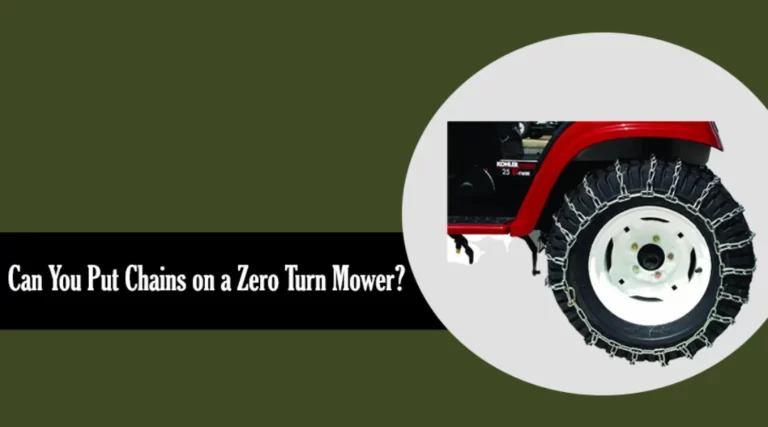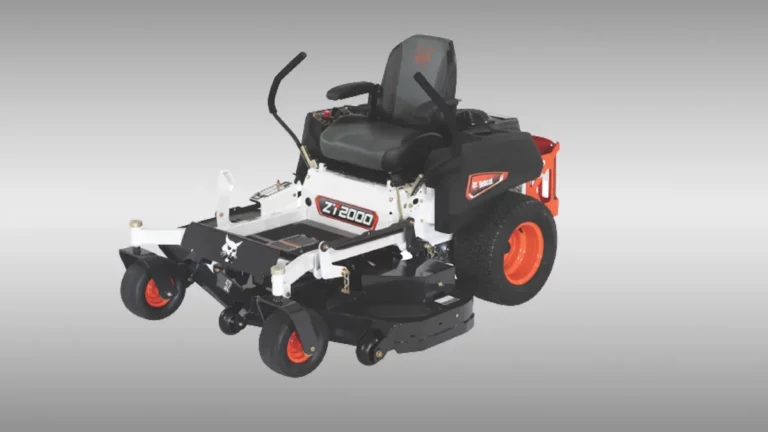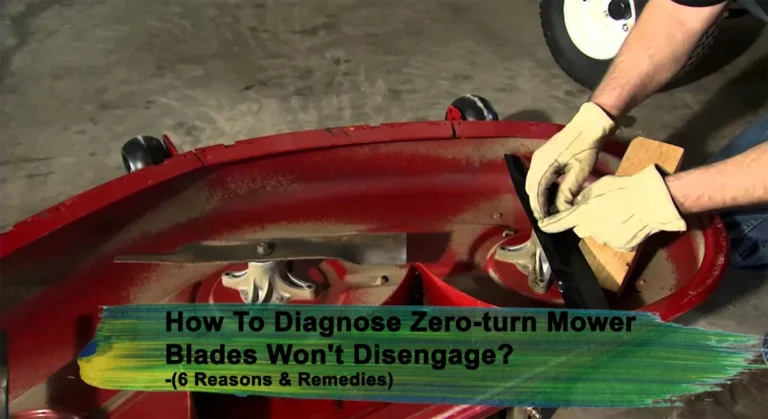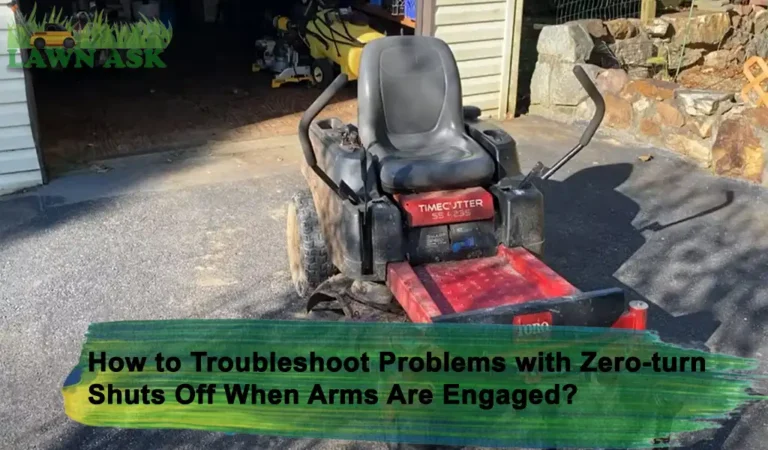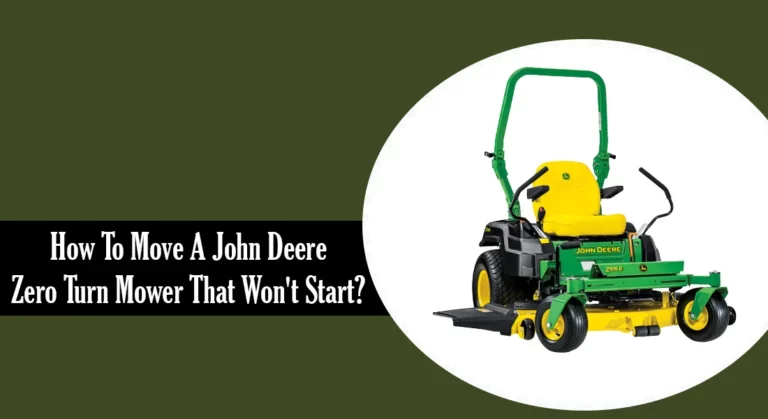Troubleshooting Zero-turn Hydrostatic Transmission Problems: The Perfect Guide
Lawnmowers with hydrostatic transmissions transfer power from the engine to hydraulic pumps, which subsequently drive the wheels by hydraulic pressure. It does not confine you to operate with preset gear speeds. But still, hydrostatic transmission encounters various difficulties.
The defective drive belt and tensioner pulley are the most common reasons for hydrostatic transmission problems.
Other causes including overheating of the hydraulic system, broken hydraulic hoses and seals, oil leakage, and old or insufficient hydraulic fluid, are major contributors to hydrostatic transmission problems.
This article will describe everything you need to know about zero-turn hydrostatic transmission problems and their troubleshooting steps.
| Problems | Solutions | |
| Internal Mechanism Defect within Hydraulic Pump | Defective Drive Belt | Check the drive belt. Replace it if not functioning efficiently. |
| Defective Tensioner Pulley | Examine the tension of the belt. | |
| Hydraulic Fluid-based Difficulties | Old or Insufficient Hydraulic Fluid | Check the oil level and condition. |
| Cavitation and Contamination | Drain the contaminated oil and refuel it with fresh oil. | |
| Overheating or Cold Hydraulic System | Examine the temperature of the hydraulic fluid and try to keep the temperature optimum. | |
| Damaged Hydraulic Hoses and Seals | Replace the hydraulic hoses and seals. |
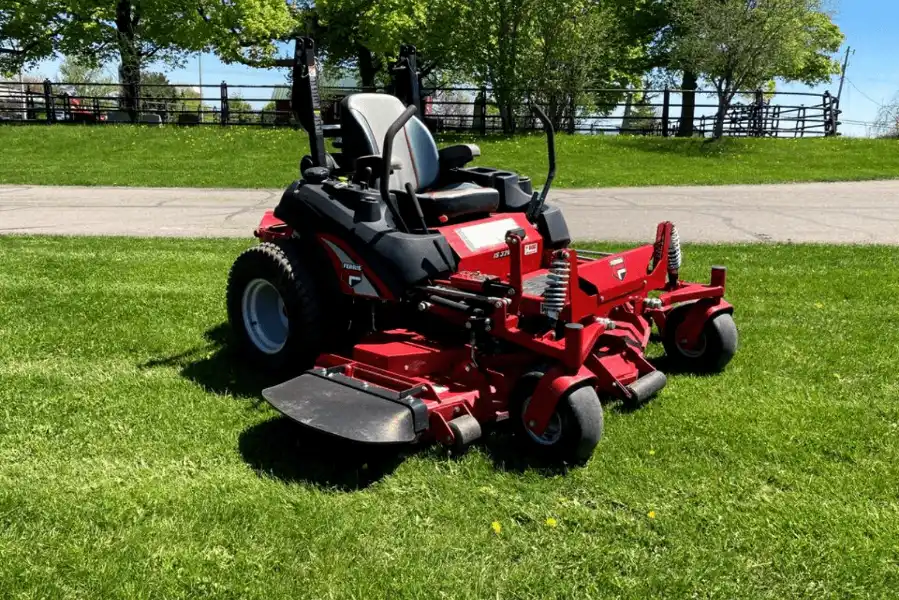
How to Tell If Hydrostatic Transmission is Bad?
A bad hydrostatic transmission indicates certain characteristics that make it simple to identify. When the transmission fails, the lawnmower will not operate efficiently, and driving will be a sluggish experience.
To be absolutely certain, examine the transmission. Ensure that you pay close attention to it while the engine is running. If the tensioner pulley is turning but the wheels are not moving, this indicates that there is a problem with the transmission.
How Does the Hydrostatic Transmission of a Zero-turn Mower Work?
In a zero-turn mower’s hydrostatic transmission, there is an input shaft that is belt-driven and directly splined into the transmission pump.
The pumping unit consists of a series of rotating pistons that ride against a plate that engages the pistons as they rotate. The rotation of the pistons against the angled plate caused the pistons to expand and retract in accordance with their position on the plate.
This movement pressurizes the oil, which then runs via a manifold block to a hydrostatic motor. The greater the plate angle, the greater the oil flow through the motor.
This is accomplished by pressing harder on the drive pedal, which is why the mower moves faster when the pedal is moved further.
Zero-turn Hydrostatic Transmission Problems and the Solutions
The majority of the issues caused by the hydrostatic transmission of zero-turn mowers are mostly attributable to two groups of causes.
- Internal Mechanism Defect within Hydraulic Pump
- Hydraulic Fluid-based Difficulties

Internal Mechanism Defect within Hydraulic Pump
The defects of the internal mechanism within the hydraulic pump or motor include:
1. Defective Drive Belt
The input shaft of the hydrostatic transmission is turned by a belt. If this drive belt is defective this will cause your hydrostatic transmission of zero-turn mowers not to work efficiently.
2. Defective Tensioner Pulley
The tensioner pulley is responsible for achieving accurate transmission and maintaining the belt’s optimum tension. Failure of a tensioner pulley results in the loss of drive belt tension and eventually problems in the hydrostatic transmission.
Troubleshooting:
To diagnose an internal mechanism defect in the hydraulic pump of a zero-turn hydrostatic transmission mower, the following steps should follow:
Step 1: Disengaging Transmission
- First, position the mower on a level surface and ensure that the parking brake is engaged.
- Follow your manual book to disengage the hydrostatic transmission.
Step 2: Check the Drive Belt
- After disengaging the transmission, inspect the drive belt responsible for turning the input shaft of the transmission.
- If the drive belt is damaged or, cracked in any way, you should change it out for a new one.
Step 3: Examine the Belt’s Tension
- If the belt is working efficiently then check the tensioner pulley of the hydrostatic transmission of your zero-turn mower.
- If the tensioner pulley is not working well, the belt’s tension will not be efficient.
- In that case, the tensioner pulley should be replaced, and the tensioner arm should be lubricated.
Related Post: Zero-Turn Mower Pulls to One Side: Most Common Causes and Solutions
Hydraulic Fluid-based Difficulties
The hydraulic fluid-based difficulties include the following:
1. Old or Insufficient Hydraulic Fluid
The engine gives power to the transmission by pumping oil from the engine to the transmission. To make pressure, there must be sufficient oil in the system.
When the oil level gets too low, the air is pumped in its place, it will not lubricate the system as it should, and your hydraulic system will feel sluggish.
2. Cavitation & Contamination
Cavitation is a common cause of problems with zero-turn hydrostatic transmissions. Having air instead of oil in the hydraulic pump prevents it from creating the pressure required to supply energy.
Contamination of fluid is mainly caused by oil leakage in the transmission system. If the fluid in your zero-turn mower’s hydrostatic system has been contaminated, the fluid’s quality will decline, resulting in poor performance.
3. Overheating or Cold Hydraulic System
Fluid contamination could lead to temperature problems in zero-turn hydrostatic transmissions. When the temperature rises, transmission shafts and tensioner pulleys may become damaged or stop functioning properly.
This weakens the performance, increases fuel consumption, and shortens the life of the zero-turn mower hydrostatic transmission’s mechanical components.
When the transmission is very cold, the hydraulic fluid primarily thickens and obstructs the hydraulic pump. Eventually, transmission damage will result from the incapacity of the hydraulic system to dissipate heat.
4. Damaged Hydraulic Hoses and Seals
Due to the high pressures generated by hydrostatic transmissions, hoses and seals are often damaged. The presence of oil leaks is a good indicator of a hose or seal that has been compromised.
Related Post: Scag vs. Toro Zero-Turn Mowers: 5 Key Differences
Troubleshooting:
To solve the hydraulic fluid-based difficulties perform the following steps:
Step 1: Check the Hydraulic Fluid
- First, examine the condition of the hydraulic fluid.
- If the fluid has become contaminated with air, you can drain it by removing the drain cap. This often requires no more than a few days to complete.
- If the oil level is low, the engine should be appropriately refueled.
- Inspect the oil reservoir and if it is empty, fill it.
Step 2: Check for Oil Leakage
- If the problem with your zero-turn mower hydrostatic transmission still persists, check for any leakage in the oil line.
- Check for damage to the hydraulic hoses and seals to ensure there are no leaks.
- After determiningthe source of the leak, try to fix the leakage or replace the component with a new one.
Step 3: Check the Temperature of the Hydraulic Fluid
- Now, examine the temperature of the hydraulic fluid.
- If the temperature exceeds the optimal level or the oil turns entirely black, it must be drained and replaced.
- If the hydraulic fluid becomes too cold and thick, you can add an anticoagulant to the transmission fluid to prevent it from becoming very thick.
Note: In some cases, Engine and Electrical Problems are also responsible for hydrostatic transmission problems of zero-turn mowers.
Why does My Hydrostatic Transmission Won’t Move?
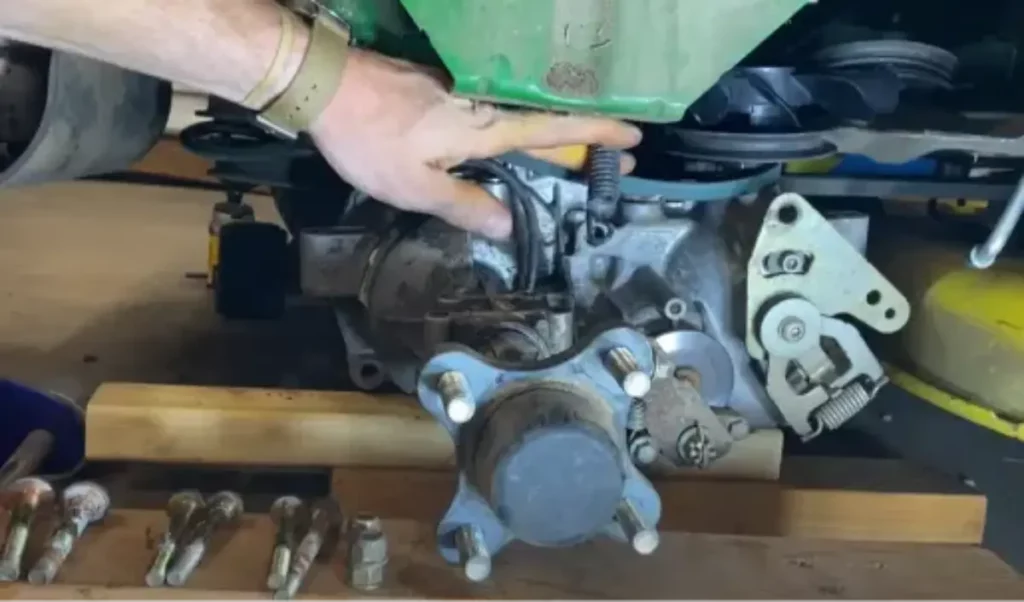
All hydraulic systems have the potential for failure, and hydrostatic lawnmowers are no exception. There are several reasons why hydrostatic transmissions may not move.
The reason behind your hydrostatic transmission not moving may include a damaged driving belt, tensioner pulley, hydraulic hoses and seals, overheated or cold oil, tainted hydraulic fluid, etc.
Related Post: Zero-turn Mower Shuts Off When Put in Gear: Causes and Solutions
Frequently Asked Questions (FAQs)
How long do hydrostatic transmissions last?
A hydrostatic transmission will last for about 2000 hours. With appropriate maintenance, you can increase the durability.
Are all zero-turn mowers hydrostatic?
Hydro-Gear gearboxes are standard on most modern zero-turn radius (ZTR) and rear-engine mowers.
Are there any drawbacks to hydrostatic transmission?
The expensive price is their primary drawback, especially when high-efficiency units are employed.
How can one prevent problems of zero-turn mowers with hydrostatic transmission?
You may easily increase your transmission’s lifespan through preventative maintenance. The hydraulic system will wear down prematurely if you don’t get your transmission repaired regularly.
Related Posts:
- Common causes for a zero-turn shutting off when arms are in use
- Overcoming challenges: Zero turn mower in sandy soil
- Common causes and solutions for zero-turn mower blades failing to disengage
- Troubleshooting guide: Zero-turn mower pulling to one side
- Troubleshooting guide: Zero-turn mower shutting off when shifting gears

